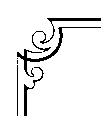Read A Field Guide to Lucid Dreaming Online
Authors: Dylan Tuccillo,Jared Zeizel,Thomas Peisel
A Field Guide to Lucid Dreaming (23 page)
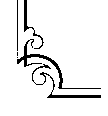
and create your surroundings. The following two lucid dreams
offer amazing accounts of the potentials of scale, detail, and beauty
within creative lucid dreams.
I wanted to create the perfect home. I made a beautiful forest
of mostly evergreens and created a clearing for a house. I made
a three-story house with many different rooms. Besides the bed-
rooms, bathrooms, kitchens, dining rooms, and living rooms, I
made an enormous library. I also made a planetarium, labo-
ratory, telescope room, and training room. The telescope room
possessed different telescopes that could see in every spectrum
of electromagnetic radiation. After finishing the house I went
outside. I made it night and made the full moon rise into midsky.
I made sure there were thunderstorms nearby. I made it so that
the wind blew the rain from the nearby storm to the area of
our house. The scenario was of astonishing beauty. I then real-
ized that there was one thing missing. She was not present. And
I would not create some dream manifestation of her, because
it would never be able to measure up to how amazing she is.
I could never do such a thing. The dream faded as I woke up.
—rIchArd V. W.
Can’t imagine creating a whole house with your mind? In this
next example, the dreamer is able to accomplish an even bigger
feat.
=
149
<

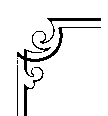
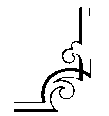
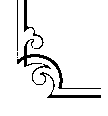
This dream, although I have had many other lucid dreams, was
the most intense, amazing lucid dream I have ever had. . . .
My goal at this point is to create another city, so I fly until I
can’t see anything I recognize, and sure enough I somehow cre-
ated another city, this one was at the edge of a body of water
and had a beachy feel. I fly down to a waterside marketplace.
Around it were weird trees with these odd hanging fruit that
sort of glowed, but I went to the marketplace and looked at
what type of food my brain had created . . . there were tons of
different foods, but the only one I tried was almost like a candy
lettuce, it sounds weird, but it was great tasting and very crisp
and refreshing. —cAMeroN r.
The God Complex
It’s important to note that even though these dreamers have a
high degree of mastery over the dream world, there are many
things not in their control. Richard, despite his detail-oriented
approach, was not in control of every color, texture, and intri-
cacy of the home he was building—his subconscious populated
those details, filling in the many blanks. He was responsible for
the intent (to build a house with specific rooms), but his mind did
the rest.
So if you’re developing a God complex, put down the thunder-
bolts and opt for a slice of humble pie.
=
150
<

In dreams, we can create anything, but we’re not creating
everything. In the second dream, Cameron’s intent was to create
a city, and he was able to do so. But he did not create each build-
ing and street of the city. He simply put his mind to work. The
dreamer is surprised to find some candy lettuce that “his brain cre-
ated.” An oneironaut may direct the dream, but the subconscious
still does most of the work, slipping in its metaphors and symbols
just as it would in any normal dream. Isn’t that more fun? Even
with complete mastery a lucid dreamer will always be surprised
and enlightened by his nighttime adventures. After all, if the end-
ing were predictable, it wouldn’t be an adventure.
LUCID DREAMING AS ART
As the world evolves and our level of collective consciousness heightens, the day
may come when lucid dreaming itself becomes an art. A place where we craft
stories and ideas into visual representation, where we first create our projects
and dreams (no pun intended) so that we can more easily bring them into
manifestation in the physical world. This is not a new thought. In fact, shamans
of indigenous cultures understood that in order for something to be created in
the physical world (such as that kitchen you’ve been meaning to remodel, or
this book) it must first be constructed in the “imaginal realm.” In other words,
lucid dreaming might be a tool in creating our physical reality.
=
151
<
�
Summary
• The principles of the dream world differ from those of the
physical world. you can easily create objects, artwork, or entire
landscapes instantly and with vivid accuracy.
• Creation is most effective with a strong intention or image in the
mind’s eye, an emotional connection, and by “cheating” the law
of cause and effect.
• In the dream world, our thoughts and emotions create the world
around us instantaneously. often what we expect to happen will
happen.
• We can dream anything into reality. Create your ideal business,
craft a poem, write a song, skydive off the empire State
Building, conjure up your soul mate, build your dream home,
invent something completely new. experiencing these things as if
they are real will allow you the clarity and confidence to create
them in the waking world.
=
152
<
13
The Natives
<•=
The natives . . . are generally tall, straight, well built and of singular
proportion; they tread strong and clever, and mostly walk with a lofty chin.
Their language is lofty, yet narrow . . . and I must say that I know not a
language spoken in Europe, that hath words of more sweetness or greatness,
in accent and emphasis, than theirs.
—William Penn,
founder of Pennsylvania, pioneer, friend of the Lenape
Venturing through the dream world, we are met with a sur-
prising realization: we are not alone. There are natives to
this land. Some mosey on by, complete strangers wrapped
up in their own world. Others seem to mimic people we know. The
land is different, but the faces are familiar. It appears that all sorts
of intricate dream characters inhabit this world. Some become our
mentors, bestowing upon us advice and offering answers to our most
pressing questions. This world is their turf after all, so they are
natural guides. But not everyone is welcoming. The natives can
scare the crap out of us, appearing in the form of fearsome crea-
tures who hunt us down as we run for our lives.
=
153
<

